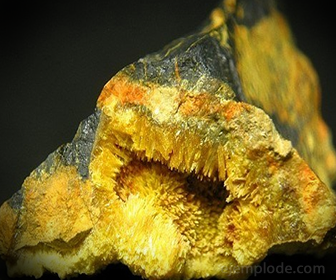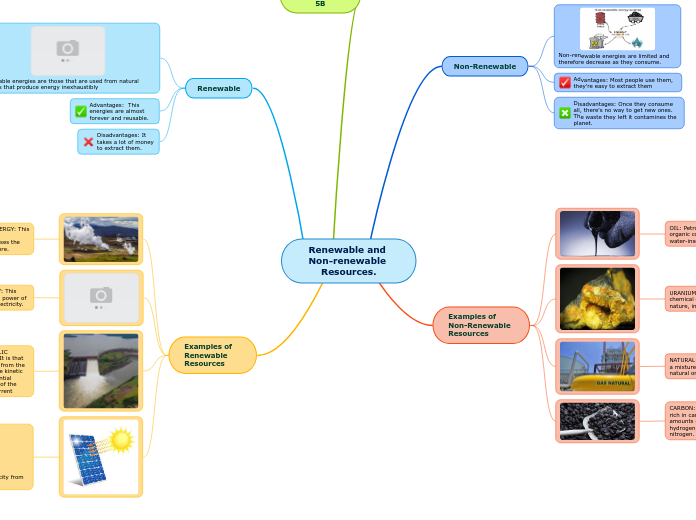Renewable and Non-renewable Resources.
Non-Renewable

Non-renewable energies are limited and therefore decrease as they consume.
Advantages: Most people use them, they're easy to extract them
Disadvantages: Once they consume all, there's no way to get new ones. The waste they left it contamines the planet.
Examples of Non-Renewable Resources

OIL: Petroleum is a mixture of organic compounds, mainly water-insoluble hydrocarbons.

URANIUM: Uranium is a chemical element present in nature, in rocks, water or air

NATURAL GAS: Natural gas is a mixture of light gases of natural origin.

CARBON: It is a black rock, very rich in carbon and with variable amounts of other elements, mainly hydrogen, sulfur, oxygen and nitrogen.
Letzly Ochoa
5B
Renewable

Renewable energies are those that are used from natural sources that produce energy inexhaustibly
Advantages: This energies are almost forever and reusable.
Disadvantages: It takes a lot of money to extract them.
Examples of Renewable Resources

GEOTHERMAL ENERGY: This energy is located underground, it uses the power of Eart's core.

AEOLIC ENERGY: This energy uses the power of wind to make electricity.

HYDRAULIC ENERGY:It is that obtained from the use of the kinetic and potential energies of the water current

SOLAR ENERGY: consists of directly obtaining electricity from solar radiation
